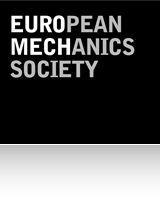515 – Advanced applications and perspectives of mutibody system dynamics
Chairperson:
Prof. Evtim Zahariev
Institute of Mechanics
Bulgarian Academy of Sciences
Acad. G. Bonchev St., bl. 4
1113 Sofia
Bulgaria
Phone: +359-2-9547147
Email: evtimvz@bas.bg
Co-chairperson
Prof. Marco Ceccarelli
LARM: Laboratory of Robotics and Mechatronics
DiMSAT at University of Cassino
Via Di Biasio 43
03043 Cassino
Italy
phone +39-0776-2993663
email: ceccarelli@unicas.it
The methodology of the Multibody Systems Dynamics, although being a subject of the theoretical and applied mechanics, encompasses particular approaches to solution of complicated tasks for analysis of systems of rigid and flexible bodies that implement complex motion in the environment. Multibody Systems Dynamics has recently established itself as a particular branch of engineering science. It could be observed that the theoretical basis is already developed but powerful tools for analysis, simulation, and design of complex mechanical systems are not yet in the hands of the scientists and practitioner engineers.
Nowadays scientists and engineers are faced with problems related to the mathematical methods and numerical algorithms that constitute the basis for multipurpose computer simulations and real time motion simulation (virtual environment) of rigid and flexible multibody systems. Path planning and motion control of flexible systems, active and passive vehicle control, and vibration suppression are technical challenges that require tailored methods and advanced algorithms for the dynamics simulation. Examples for future applications of advanced simulation techniques include large flexible structures exposed to earthquakes and natural disasters, smart structures, marine systems, construction machines and large vehicles in general. Aeronautics and space engineering in particular rely on accurate numerical simulations that are the basis for motion control such as reorientation and maneuvering. Space systems are also subject to dynamic restrictions and design constraints that need to be taken into account during the design process. Manipulators, robots and autonomous walking machines operating in hostile environment and underwater are also targeted applications of the multibody system dynamics methodology. Concepts from multibody system dynamics can be applied in biomechanics, medicine and surgery. In fact, they have been successfully applied for the analysis of medical and biomechanical problems, and gave rise to novel analysis tools and technical applications.
At the colloquium theoretical advances and numerical methods for the generation of dynamics equations and their solution will be discussed. Special emphasis will be given to the virtual realty algorithms and real time simulation. Their application to Robotics, Mechatronics and Smart Systems, Vehicle Dynamics, Aeronautics and Space Structures, Solid-Fluid Interaction, Biomechanics and Medical Applications will be visible from the anticipated presentations. New ideas, future trends and areas of applications will be discussed.
Another aim of the colloquium is to provide a platform and a productive atmosphere for exchange of new ideas and experiences between teams and experts in the filed, as well as to create the basis for further developments and collaboration.
Topics:
Nowadays scientists and engineers are faced with problems related to the mathematical methods and numerical algorithms that constitute the basis for multipurpose computer simulations and real time motion simulation (virtual environment) of rigid and flexible multibody systems. Path planning and motion control of flexible systems, active and passive vehicle control, and vibration suppression are technical challenges that require tailored methods and advanced algorithms for the dynamics simulation. Examples for future applications of advanced simulation techniques include large flexible structures exposed to earthquakes and natural disasters, smart structures, marine systems, construction machines and large vehicles in general. Aeronautics and space engineering in particular rely on accurate numerical simulations that are the basis for motion control such as reorientation and maneuvering. Space systems are also subject to dynamic restrictions and design constraints that need to be taken into account during the design process. Manipulators, robots and autonomous walking machines operating in hostile environment and underwater are also targeted applications of the multibody system dynamics methodology. Concepts from multibody system dynamics can be applied in biomechanics, medicine and surgery. In fact, they have been successfully applied for the analysis of medical and biomechanical problems, and gave rise to novel analysis tools and technical applications.
At the colloquium theoretical advances and numerical methods for the generation of dynamics equations and their solution will be discussed. Special emphasis will be given to the virtual realty algorithms and real time simulation. Their application to Robotics, Mechatronics and Smart Systems, Vehicle Dynamics, Aeronautics and Space Structures, Solid-Fluid Interaction, Biomechanics and Medical Applications will be visible from the anticipated presentations. New ideas, future trends and areas of applications will be discussed.
Another aim of the colloquium is to provide a platform and a productive atmosphere for exchange of new ideas and experiences between teams and experts in the filed, as well as to create the basis for further developments and collaboration.
Topics:
- Advances in Dynamics Formulation and Real Time Motion Simulation;
- Robotics, Mechatronics, and Smart Systems;
- Vehicle Dynamics;
- Aerospace and Space Applications;
- Solid-Fluid Interaction;
- Biomechanics and Medical Applications;
- New Systems and Areas of Application.
